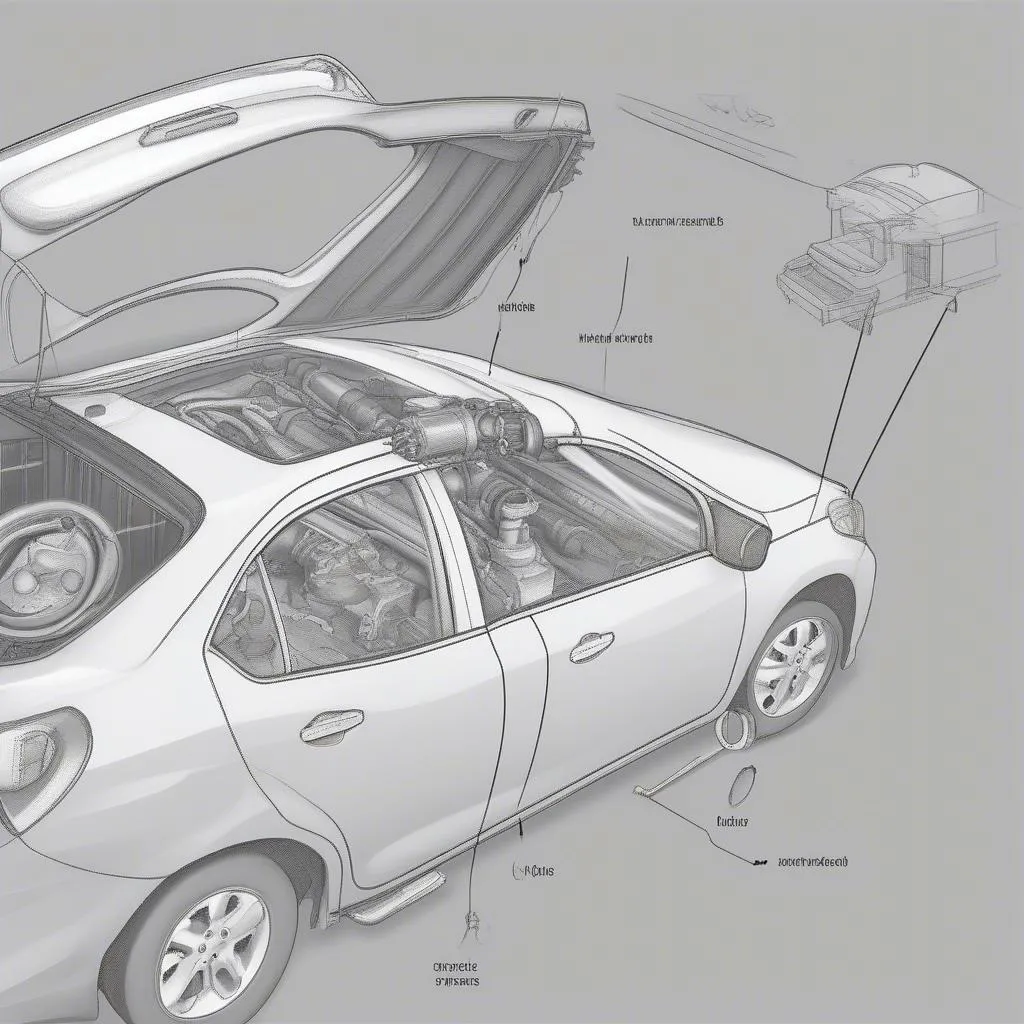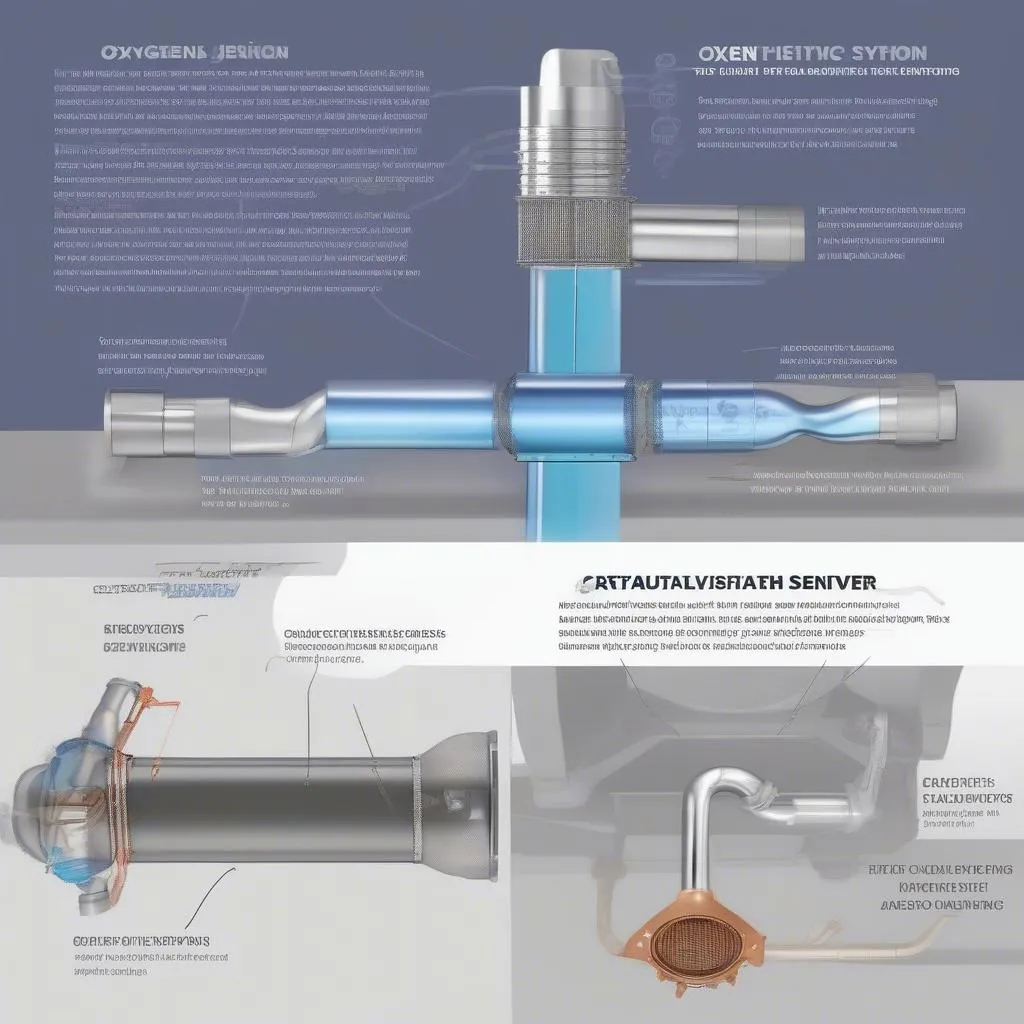Have you ever been cruising down the road in your trusty 2009 Toyota Corolla, when suddenly, the check engine light decides to throw a party on your dashboard? You pull over, fish out your trusty OBD-II scanner, and bam – you’re greeted by the cryptic code: P0138. What does it all mean? Don’t worry; we’re here to break down this common issue and get you back on the road with confidence.
What Does the P0138 Code Really Mean?
Simply put, the P0138 code means your car’s computer has detected an issue with the oxygen sensor circuit. Specifically, it’s telling you that the voltage signal from the oxygen sensor on Bank 1, Sensor 2 (that’s the sensor after the catalytic converter), has been too high for too long.
Think of your oxygen sensors as the eyes and ears of your engine’s emission control system. They monitor the oxygen levels in your exhaust to help your car run at peak efficiency and minimize harmful emissions. When the P0138 code pops up, it’s like your car is saying, “Hey, this sensor is sending wonky signals, and I need help!”
Common Causes of a P0138 Code in Your Toyota Corolla
Before we jump into solutions, let’s take a look at what might be causing this sensor to act up:
- Faulty Oxygen Sensor: This is the most common culprit. Like any car part, oxygen sensors can wear out over time due to exposure to extreme heat and exhaust gases.
- Wiring Issues: Damaged, corroded, or loose wiring connecting to the oxygen sensor can disrupt the signal it sends to your car’s computer.
- Exhaust Leaks: A leak in your exhaust system, particularly before the oxygen sensor, can throw off the readings and trigger the code.
- Vacuum Leaks: Similar to exhaust leaks, a vacuum leak can disrupt the air-fuel mixture and cause inaccurate oxygen sensor readings.
- Fuel Pressure Problems: Issues with your fuel pump or fuel pressure regulator can also impact the air-fuel mixture, leading to incorrect sensor readings.
How to Troubleshoot and Fix the P0138 Code
While the P0138 code might seem intimidating, there are several steps you can take to diagnose and fix the issue:
- Check for Other Codes: Sometimes, the P0138 code can be accompanied by other diagnostic trouble codes. Addressing these other issues first might resolve the oxygen sensor problem as well.
- Inspect the Oxygen Sensor and Wiring: Carefully examine the oxygen sensor and its wiring harness for any signs of damage, corrosion, or loose connections.
- Check for Exhaust Leaks: Listen carefully for any hissing sounds coming from your exhaust system, especially near the catalytic converter.
- Test the Oxygen Sensor Voltage: Using a multimeter, you can test the voltage signal from the oxygen sensor. This requires some technical know-how, so consult a repair manual or consider seeking professional help.
- Replace the Oxygen Sensor: If the sensor itself is faulty, replacement is usually the most straightforward solution.
 Oxygen Sensor Location
Oxygen Sensor Location
Don’t Ignore the Warning Signs!
Ignoring a P0138 code can lead to decreased fuel efficiency, poor engine performance, and potential damage to your catalytic converter – a costly repair!
Frequently Asked Questions About the P0138 Code:
- Can I still drive my car with a P0138 code? While your car may still be drivable, it’s not recommended to ignore the code. Driving with a faulty oxygen sensor can impact your car’s performance and potentially lead to more serious problems.
- How much does it cost to fix a P0138 code? The cost of repair varies depending on the root cause and whether you tackle the repair yourself or seek professional help. A new oxygen sensor can range from $50 to $200, while labor costs can add another $100-$200.
- Can a bad gas cap cause a P0138 code? While a loose gas cap can trigger other emissions-related codes, it’s unlikely to be the cause of a P0138 code.
 Oxygen Sensor vs Catalytic Converter
Oxygen Sensor vs Catalytic Converter